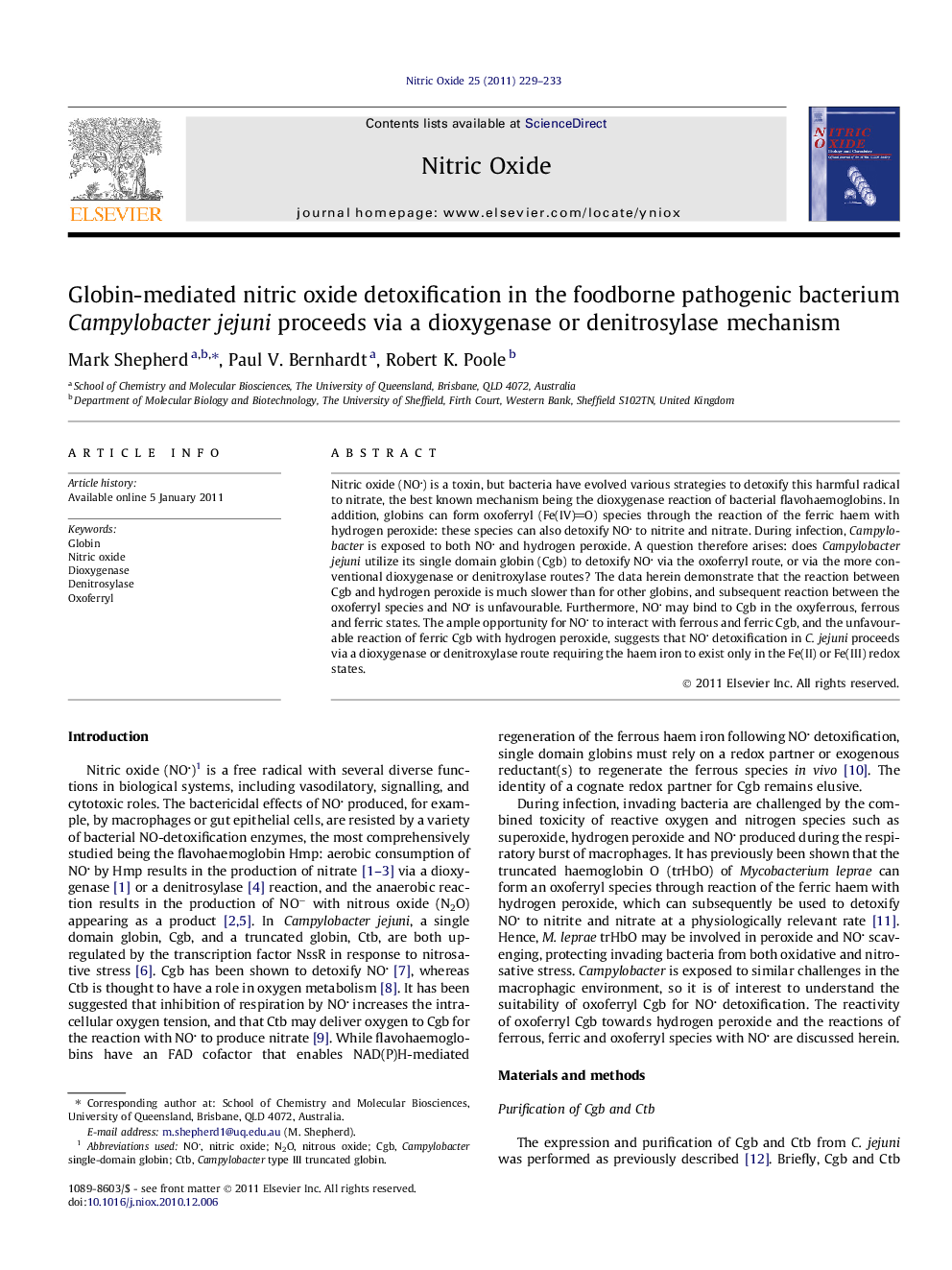| کد مقاله | کد نشریه | سال انتشار | مقاله انگلیسی | نسخه تمام متن |
|---|---|---|---|---|
| 2001622 | 1066049 | 2011 | 5 صفحه PDF | دانلود رایگان |

Nitric oxide (NO) is a toxin, but bacteria have evolved various strategies to detoxify this harmful radical to nitrate, the best known mechanism being the dioxygenase reaction of bacterial flavohaemoglobins. In addition, globins can form oxoferryl (Fe(IV)O) species through the reaction of the ferric haem with hydrogen peroxide: these species can also detoxify NO to nitrite and nitrate. During infection, Campylobacter is exposed to both NO and hydrogen peroxide. A question therefore arises: does Campylobacter jejuni utilize its single domain globin (Cgb) to detoxify NO via the oxoferryl route, or via the more conventional dioxygenase or denitroxylase routes? The data herein demonstrate that the reaction between Cgb and hydrogen peroxide is much slower than for other globins, and subsequent reaction between the oxoferryl species and NO is unfavourable. Furthermore, NO may bind to Cgb in the oxyferrous, ferrous and ferric states. The ample opportunity for NO to interact with ferrous and ferric Cgb, and the unfavourable reaction of ferric Cgb with hydrogen peroxide, suggests that NO detoxification in C. jejuni proceeds via a dioxygenase or denitroxylase route requiring the haem iron to exist only in the Fe(II) or Fe(III) redox states.
Journal: Nitric Oxide - Volume 25, Issue 2, 1 August 2011, Pages 229–233